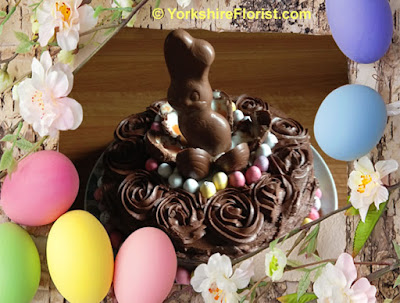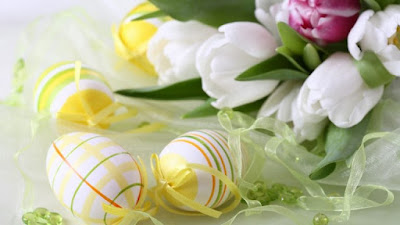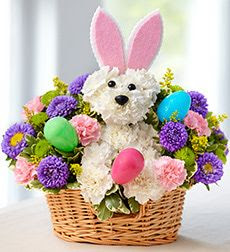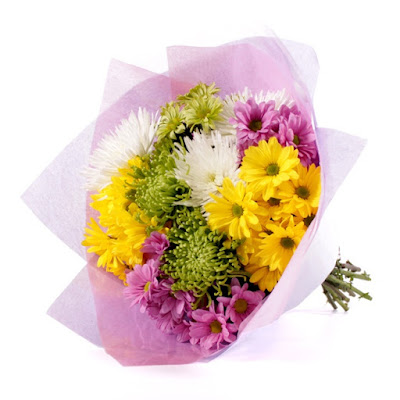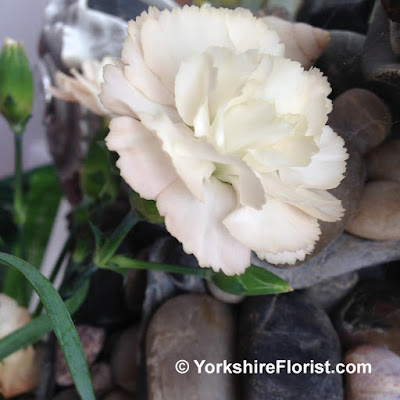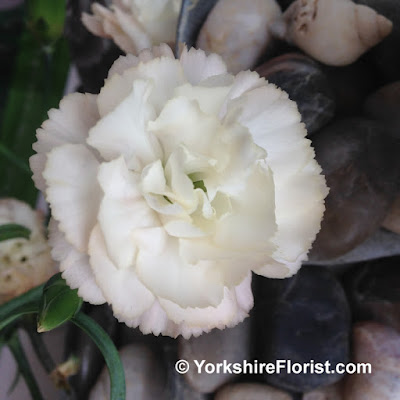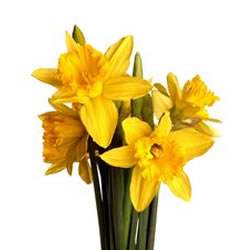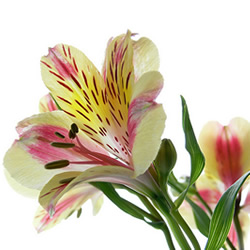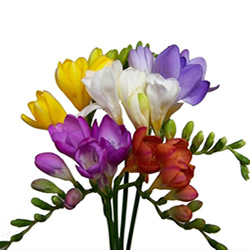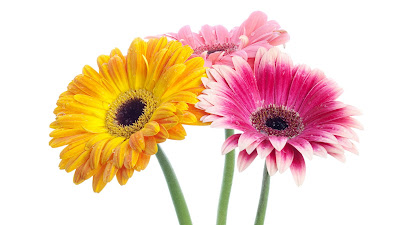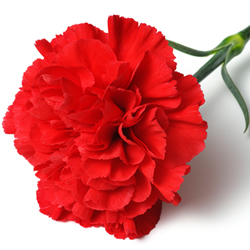Click the logo to go to our Twitter page.

Flowers, floral arrangements and gifts handmade in South Yorkshire. Arrangements and bouquets for all occasions.
Free Local Delivery - Visit Website
Tuesday, 18 April 2017
Facebook Competition
Go to our Facebook page to enter our competition to win a bouquet of fresh flowers.
Share and Like to win.
https://www.facebook.com/yorksflorist #Competition #win #Flowers #share #Like
Share and Like to win.
https://www.facebook.com/yorksflorist #Competition #win #Flowers #share #Like
Location:
Goldthorpe, UK
Monday, 17 April 2017
Easter Bunny Cake
Chocolate Cake with chocolate buttercream filling, decorated with chocolate mini eggs and topped with a chocolate bunny sat in a creme egg nest.
It really is a very happy Easter.
It really is a very happy Easter.
Location:
Marr, Doncaster DN5, UK
Sunday, 16 April 2017
Easter Eggs
On Easter Sunday millions of us will be tucking into delicious chocolate eggs as the Christian world celebrates.
But while many will be at least vaguely familiar with the story of Easter, its relation to eating mountains of oval-shaped chocolate treats is less clear.
So how did it come about? Easter celebrates the resurrection of Jesus after his crucifixion. Christians believe Jesus was crucified on Good Friday and rose again three days later. The three days are known as the Easter Triduum.
Even before the birth of Christianity, the egg was seen as a symbol of Spring, a celebration of the rebirth and reinvigoration after the harshness of winter.
Even before the birth of Christianity, the egg was seen as a symbol of Spring, a celebration of the rebirth and reinvigoration after the harshness of winter.
Eggs would then be cracked against one another, leaving just empty shells - a symbol of the empty tomb Jesus left behind.
The tradition survives today in the shape of egg rolling, representing the rolling away of the rock from Jesus' tomb.
Over time, Easter eggs became more and more elaborately decorated, perhaps most famously by Russian jeweler Peter Carl Fabergé, creator of the priceless Fabergé eggs as Easter gifts for Tsars Alexander III and Nicholas II.
Over time, Easter eggs became more and more elaborately decorated, perhaps most famously by Russian jeweler Peter Carl Fabergé, creator of the priceless Fabergé eggs as Easter gifts for Tsars Alexander III and Nicholas II. The introduction of chocolate eggs is a relatively new phenomenon, originating in France and Germany in the 19th century.
Easter is currently a "movable feast" - a date determined by the lunar calendar rather than the normal Gregorian or Julian calendars, which follow the cycle of the sun.
So how did it come about? Easter celebrates the resurrection of Jesus after his crucifixion. Christians believe Jesus was crucified on Good Friday and rose again three days later. The three days are known as the Easter Triduum.
Even before the birth of Christianity, the egg was seen as a symbol of Spring, a celebration of the rebirth and reinvigoration after the harshness of winter.
Even before the birth of Christianity, the egg was seen as a symbol of Spring, a celebration of the rebirth and reinvigoration after the harshness of winter.
Eggs would then be cracked against one another, leaving just empty shells - a symbol of the empty tomb Jesus left behind.
The tradition survives today in the shape of egg rolling, representing the rolling away of the rock from Jesus' tomb.
Over time, Easter eggs became more and more elaborately decorated, perhaps most famously by Russian jeweler Peter Carl Fabergé, creator of the priceless Fabergé eggs as Easter gifts for Tsars Alexander III and Nicholas II.
Over time, Easter eggs became more and more elaborately decorated, perhaps most famously by Russian jeweler Peter Carl Fabergé, creator of the priceless Fabergé eggs as Easter gifts for Tsars Alexander III and Nicholas II. The introduction of chocolate eggs is a relatively new phenomenon, originating in France and Germany in the 19th century.
Easter is currently a "movable feast" - a date determined by the lunar calendar rather than the normal Gregorian or Julian calendars, which follow the cycle of the sun.
Easter Bunny
Where does the Easter bunny come from?
We can blame the Germans for the Easter bunny.
Originally an 'Easter hare', a buck-toothed bringer of chocolate to the kids that have behaved themselves was first mentioned in German literature in 1682. The tradition stuck, and has led to the Easter bunnies you see on the shelves today as well as the expectation for a delivery of Easter eggs on the day.
We can blame the Germans for the Easter bunny.
Originally an 'Easter hare', a buck-toothed bringer of chocolate to the kids that have behaved themselves was first mentioned in German literature in 1682. The tradition stuck, and has led to the Easter bunnies you see on the shelves today as well as the expectation for a delivery of Easter eggs on the day.
Location:
Goldthorpe, UK
Easter Facts
The first chocolate egg in the UK was produced in 1873 by Fry’s of Bristol
On Easter Sunday, some people traditionally roll painted eggs down steep hills
The gesture of giving eggs at Easter has been traced back to Egyptians, Persians, Gauls, Greeks and Romans. Back then the egg was a symbol of life
Every child in the UK receives an average of 8.8 Easter eggs every year – double their recommended calorie intake for a whole week
When tucking into a chocolate bunny rabbit, 76 per cent of people bite the ears off first
On Easter Sunday, some people traditionally roll painted eggs down steep hills
The gesture of giving eggs at Easter has been traced back to Egyptians, Persians, Gauls, Greeks and Romans. Back then the egg was a symbol of life
Every child in the UK receives an average of 8.8 Easter eggs every year – double their recommended calorie intake for a whole week
When tucking into a chocolate bunny rabbit, 76 per cent of people bite the ears off first
Location:
Mexborough, UK
Saturday, 15 April 2017
Easter Hot Cross Buns
Why do we eat hot cross buns at Easter?
Hot cross buns are a traditional snack for this time of year - you probably noticed your local store stocked full of them on your last trip to the supermarket.
Eaten on Good Friday, they mark the celebration of the end of Lent.
The cross on the top represents the crucifixion of Christ and the spices inside remind Christians of the spices put on his body.
Hot cross buns are a traditional snack for this time of year - you probably noticed your local store stocked full of them on your last trip to the supermarket.
Eaten on Good Friday, they mark the celebration of the end of Lent.
The cross on the top represents the crucifixion of Christ and the spices inside remind Christians of the spices put on his body.
Labels:
buns,
cross,
Easter,
friday,
good,
good friday,
happy,
hot,
hot cross buns
Location:
Mexborough, UK
Friday, 7 April 2017
Bouquet on a Budget
Chrysanthemums.
Long lasting, and affordable. Chrysanthemums are available in many colours and, although some varieties have a single head, many types have up to 20 heads per stem. Even the single head types usually have larger blooms. These are excellent flowers to give an impressive sized gift of flowers, even on a budget, as the colours can be mixed.
Chrysanthemum bouquets start from £10.00 (including free delivery locally)
I will post more chrysanthemum types soon on this blog.
Labels:
anniversary,
basic,
birthday,
bouquet,
budget,
chrysanthemums,
colourful,
dahlia,
daisy,
Easter,
gift,
mums,
spray
Location:
Mexborough, UK
Facebook Page
We now have a new account on Facebook.
Friends and followers of the old page will be invited to join the new page over the coming days.
Take a look now, and watch the new page grow.
Friends and followers of the old page will be invited to join the new page over the coming days.
Take a look now, and watch the new page grow.
Thursday, 6 April 2017
Wedding Flowers - Dusky Pink & Champagne
Today I added the first real updates on my wedding pages.
The first of the collection of dusky pink & champagne silk roses. The complete collection will be added over the next few days.
Click the pic to see more.
The first of the collection of dusky pink & champagne silk roses. The complete collection will be added over the next few days.
Click the pic to see more.
Labels:
bouquets,
buttonholes,
champagne,
corsages,
dearne valley,
decorations,
mexborough,
pink,
posies,
silk flowers,
south yorkshire,
wedding
Location:
Mexborough, UK
Daffodil & Tulip Wreath in Silk
This lovely silk wreath, in vibrant, warm yellow and orange, will cheer up any door this Spring.
Can be hung indoors to brighten up any room.
Also a long lasting gift for a graveside, cemetery, or memorial place.
Wreath diameter is approximately 10 inches/ 25 centimetres.
Click Image to Buy
Can be hung indoors to brighten up any room.
Also a long lasting gift for a graveside, cemetery, or memorial place.
Wreath diameter is approximately 10 inches/ 25 centimetres.
Click Image to Buy
Location:
Mexborough, UK
Wednesday, 5 April 2017
Fresh Flowers - Spray Carnations
Spray Carnations are smaller cousins to the more usual breed of Carnations with each stem having several smaller flower heads. Spray Carnations belong to the Caryophyllaceae family and are native to the Mediterranean region.
Labels:
arrangement,
bouquet,
carnations,
colourful,
cut,
flowers,
fresh,
spray,
spray carnations
Location:
Mexborough, UK
Tuesday, 4 April 2017
Silk Carnations
Silk carnations, and spray carnations. Pic shows pale pink & champagne carnations.
Silk carnations, and silk carnation spray are available in many many colours.
Contact us with your choice, and if we don't have them we will be able to get them in most cases.
Silk carnations, and silk carnation spray are available in many many colours.
Contact us with your choice, and if we don't have them we will be able to get them in most cases.
Labels:
buttonholes,
carnations,
colour scheme,
colours,
fake,
flowers,
natural,
silk,
theme,
tree fern,
wedding
Location:
Mexborough, UK
Saturday, 1 April 2017
Caring for your Tulips - cut flowers
Tulips
Tulips are spring’s most coveted flower. Unlike other flowers, tulips continue to grow after being cut! They come in the most beautiful colours and look gorgeous alone in bud vases or even in a bucket. With proper care, cut tulips can last a week or more.
Only use a small amount of fresh water in the vase at a time so the tulips won’t continue to grow, use cold water for the tulips and a small amount of flower food. Keep away from direct sunlight.
If your tulips are wilted in the morning, cut their stems, put them in a taller vase, add a little cold water and they’ll stand straight up again.
Check the water often as you’ll need to replenish it because they do drink a lot.
Tulips are spring’s most coveted flower. Unlike other flowers, tulips continue to grow after being cut! They come in the most beautiful colours and look gorgeous alone in bud vases or even in a bucket. With proper care, cut tulips can last a week or more.
Only use a small amount of fresh water in the vase at a time so the tulips won’t continue to grow, use cold water for the tulips and a small amount of flower food. Keep away from direct sunlight.
If your tulips are wilted in the morning, cut their stems, put them in a taller vase, add a little cold water and they’ll stand straight up again.
Check the water often as you’ll need to replenish it because they do drink a lot.
Labels:
advice,
blooms,
bouquet,
bouquets,
bunches,
care,
cut,
flower,
flowers,
fresh,
instructions,
prolong life,
tulip,
tulips
Location:
Mexborough, UK
Caring for your Daffodils - cut flowers
Daffodils
Daffodils last longer in shallow water, so when you re-cut their stems and change their water (adding additional floral food) every two or three days, fill the vase only partway. You can leave the protective husks on or gently remove them. When daffodil stems are cut, they release sap that can shorten the life of other flowers. To prevent this, after cutting their stems, place them in a bucket of water for at least 12 hours on their own before mixing them with other flowers. Some modern designs use daffodils with the bulb and roots still intact on the stems. The soil is washed from the root system – and you can enjoy the full botany of the flower from roots to stem, leaves and blossoms.
Daffodils last longer in shallow water, so when you re-cut their stems and change their water (adding additional floral food) every two or three days, fill the vase only partway. You can leave the protective husks on or gently remove them. When daffodil stems are cut, they release sap that can shorten the life of other flowers. To prevent this, after cutting their stems, place them in a bucket of water for at least 12 hours on their own before mixing them with other flowers. Some modern designs use daffodils with the bulb and roots still intact on the stems. The soil is washed from the root system – and you can enjoy the full botany of the flower from roots to stem, leaves and blossoms.
Labels:
advice,
blooms,
bouquet,
bouquets,
bunches,
care,
cut,
daffodil,
daffodils,
flower,
flowers,
fresh,
instructions,
narcissi,
narcissus,
prolong life
Location:
Mexborough, UK
Caring for your Alstromeria
Alstroemeria
The buds of your Alstroemeria may appear, when new, to be very tight; with proper nutrition from flower food they should open to full bloom and maximum enjoyment. Alstroemeria are particularly thirsty flowers, so check the vase often to ensure it is full (or the foam material is saturated) and add floral food with each water change.
The buds of your Alstroemeria may appear, when new, to be very tight; with proper nutrition from flower food they should open to full bloom and maximum enjoyment. Alstroemeria are particularly thirsty flowers, so check the vase often to ensure it is full (or the foam material is saturated) and add floral food with each water change.
Labels:
advice,
alstroemeria,
blooms,
bouquet,
bouquets,
bunches,
care,
cut,
flower,
flowers,
fresh,
instructions,
prolong life
Location:
Mexborough, UK
Caring for your Iris - cut flowers
Iris
Iris may arrive in your vase arrangement as tight buds. But they will open quickly and mature to open form usually within one or two days. Their beautiful blue blossom look good with other spring flowers like tulips and lilies. Their vase life is wonderful, although short lived. Keep water levels in the vase full and bacteria free for best results. Expected vase life is 3-5 days.
Iris may arrive in your vase arrangement as tight buds. But they will open quickly and mature to open form usually within one or two days. Their beautiful blue blossom look good with other spring flowers like tulips and lilies. Their vase life is wonderful, although short lived. Keep water levels in the vase full and bacteria free for best results. Expected vase life is 3-5 days.
Labels:
advice,
blooms,
bouquet,
bouquets,
bunches,
care,
cut,
flower,
flowers,
fresh,
instructions,
iris,
prolong life
Location:
Mexborough, UK
Caring for your Freesias
Freesia
The same general care guidelines described above apply to freesia, but note that they prefer room-temperature water. Blossoms appear on a comb – in order from largest to smallest on the horizontal comb. As blossoms pass their prime, they should be plucked or removed from the stem to keep the flower looking attractive.
The same general care guidelines described above apply to freesia, but note that they prefer room-temperature water. Blossoms appear on a comb – in order from largest to smallest on the horizontal comb. As blossoms pass their prime, they should be plucked or removed from the stem to keep the flower looking attractive.
Labels:
advice,
blooms,
bouquet,
bouquets,
bunches,
care,
cut,
flower,
flowers,
freesia,
freesias,
fresh,
instructions,
prolong life
Location:
Mexborough, UK
Caring for your Gerbera
Gerbera
Gerbera stems are highly susceptible to bacteria blockage, causing their heads to droop over, so change their water often and replenish their supply of floral food every 1-2 days. Since they are particularly sensitive to ethylene gas and bacteria – keep the vase and surrounding areas clean and debris free.
Gerbera stems are highly susceptible to bacteria blockage, causing their heads to droop over, so change their water often and replenish their supply of floral food every 1-2 days. Since they are particularly sensitive to ethylene gas and bacteria – keep the vase and surrounding areas clean and debris free.
Labels:
advice,
blooms,
bouquet,
bouquets,
bunches,
care,
cut,
flower,
flowers,
fresh,
gerbera,
gerberas,
instructions,
prolong life
Location:
Mexborough, UK
Caring for your Chrysanthemums
Chrysanthemums
Chrysanthemums come in a wide variety of colors, shapes and petal formations. Some even look like the most exotic blossoms you've ever seen – in unusual colors with single or multiple blossoms per stem. It's important to remove the foliage of chrysanthemums if it begins to droop
or yellow. The foliage often deteriorates more quickly than the flowers themselves. Recutting the stems often will also increase the uptake of water and increase vase life. Most chrysanthemums will last 7 to 12 days on average.
Chrysanthemums come in a wide variety of colors, shapes and petal formations. Some even look like the most exotic blossoms you've ever seen – in unusual colors with single or multiple blossoms per stem. It's important to remove the foliage of chrysanthemums if it begins to droop
or yellow. The foliage often deteriorates more quickly than the flowers themselves. Recutting the stems often will also increase the uptake of water and increase vase life. Most chrysanthemums will last 7 to 12 days on average.
Labels:
advice,
blooms,
bouquet,
bouquets,
bunches,
care,
chrysanthemum,
chrysanthemums,
chrysanths,
cut,
flower,
flowers,
fresh,
instructions,
mums,
prolong life
Location:
Mexborough, UK
Caring for your Carnations
Carnations
The same general care guidelines described above apply to carnations, including their sensitivity to ethylene, a harmless (harmless to humans and animals), naturally produced gas,
which can be released by fruits, vegetables, and decaying floral materials. Keep arranged carnations free of ethylene producing materials for best results.
When you re-cut the stems, cut them just above one of the nodes that run up the flower's stalk. This will allow the stem to more easily draw the water it needs. When properly cared for carnations can last 7-14 days, depending on variety.
The same general care guidelines described above apply to carnations, including their sensitivity to ethylene, a harmless (harmless to humans and animals), naturally produced gas,
which can be released by fruits, vegetables, and decaying floral materials. Keep arranged carnations free of ethylene producing materials for best results.
When you re-cut the stems, cut them just above one of the nodes that run up the flower's stalk. This will allow the stem to more easily draw the water it needs. When properly cared for carnations can last 7-14 days, depending on variety.
Labels:
advice,
blooms,
bouquet,
bouquets,
bunches,
care,
carnation,
carnations,
cut,
flower,
flowers,
fresh,
instructions,
prolong life
Location:
Mexborough, UK
Caring for your Roses
Roses
Follow the general care guidelines described above for your roses, being sure to remove any discolored petals on the flower's outer edge (called guard petals) and foliage that fall below the waterline when refreshing your arrangement. Recutting the stems often will give your roses the longest vase life.
Follow the general care guidelines described above for your roses, being sure to remove any discolored petals on the flower's outer edge (called guard petals) and foliage that fall below the waterline when refreshing your arrangement. Recutting the stems often will give your roses the longest vase life.
Labels:
advice,
blooms,
bouquet,
bouquets,
bunches,
care,
cut,
flower,
flowers,
fresh,
instructions,
prolong life,
rose,
roses
Location:
Mexborough, UK
Caring for your Lilies
Lilies
Lily pollen can stain clothing and furniture, so carefully remove the anthers (the orange pollen-coated tips at the end of the stamens) with tissues before displaying your bouquet. As flowers open as your design ages, you should continue to remove the anthers. Follow the same general care guidelines described above, but since lilies bruise easily, handle them with particular care. Their blooms open in succession, and you can snip off spent flowers close to the main stem.
Lily pollen can stain clothing and furniture, so carefully remove the anthers (the orange pollen-coated tips at the end of the stamens) with tissues before displaying your bouquet. As flowers open as your design ages, you should continue to remove the anthers. Follow the same general care guidelines described above, but since lilies bruise easily, handle them with particular care. Their blooms open in succession, and you can snip off spent flowers close to the main stem.
Labels:
advice,
blooms,
bouquet,
bouquets,
bunches,
care,
cut,
flower,
flowers,
fresh,
instructions,
lilies,
lily,
prolong life
Location:
Mexborough, UK
Subscribe to:
Comments (Atom)


